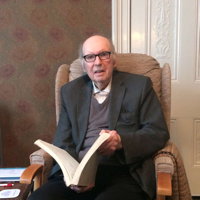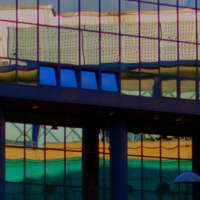ARTICLES BEING VIEWED NOW:
- Régine Crespin
- Hector Berlioz
- Ruth Railton
- Marián Varga
- Profile. A Very Positive Conductor - Paul Bodine talks to Los Angeles Opera's Music Director Designate, Domingo Hindoyan
A Star is Born
GIUSEPPE PENNISI listens to Enrico Saverio Pagano and Orchestra Canova
Write in your booknote, please: Enrico Saverio Pagano and Orchestra Canova. They are a new star in the firmament of symphonic music. Pagano is twenty-six years old. The average age of the instrumentalists is twenty-five. The Orchestra was founded in 2014 when Pagano was twenty. They perform mostly in Northern Italy and in Switzerland. They have financial support from a bank and an electrical firm. Their first CD was published by Sony Classical in June 2021. I listened to them on 2 October 2021 at their Rome debut at the inaugural concert of the 77th season of the Istituzione Universitaria dei Concerti (IUC) in the main hall of Rome University La Sapienza. They received standing ovations and requests for encores. The Orchestra may become resident for a special IUC project. If this does happen, it would be an excellent 'buy' for IUC.
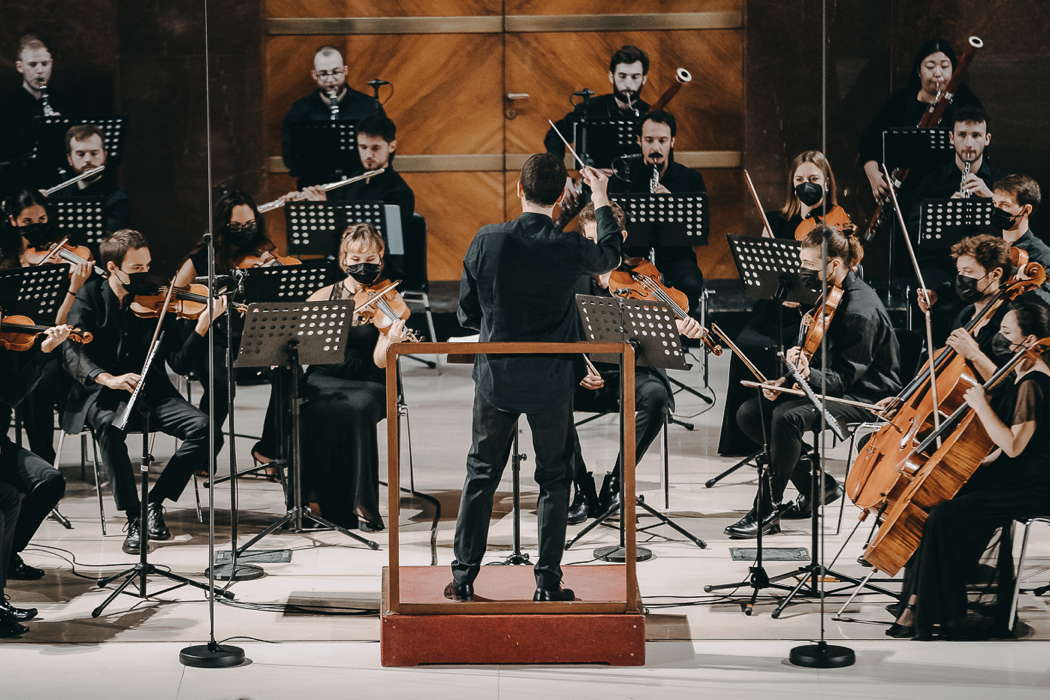
Enrico Saverio Pagano conducting the Canova Chamber Orchestra in Rome on 30 September 2021. Photo © 2021 Federico Priori
The concert included two masterpieces by Beethoven: the concerto for piano and orchestra in E flat major 'Emperor' and the seventh symphony in A major. Entrusting two masterpieces by Beethoven to an orchestra of 33 players is also and above all a philological choice because at the end of the eighteenth century and at the beginning of the nineteenth century, orchestras had many fewer players than those from the last decades of the nineteenth century and often still characterize performances. Before the concert, I listened to an old LP record from my collection: the 'Concerto for the Emperor' performed by the Philarmonia Orchestra conducted by Herbert von Karajan with Walter Gieseking as soloist - Odyssey of the series 'Legendary Performances'. The performance and mono recording date back to the 1950s; the concert has a colossal grandeur worthy of being almost the soundtrack for The Ten Commandments by Cecil B De Mille - far from the composer's intentions.
Piano Concerto No 5 was composed between 1809 and 1810. It is named 'The Emperor', but it has nothing to with Napoleon. The concert was dedicated to Archduke Rudolf John of Habsburg-Lorraine. The first performance took place in Leipzig, the year after that of its final draft, on 28 November 1811, by the pianist Friedrich Schneider and under the direction of Johann Philipp Christian Schulz. In Vienna, it was performed the following year, with an audience that showed a certain coldness towards Beethoven's masterpiece, also in consideration of the duration of the performance - about forty minutes. This is useful for understanding the context of the composition.
E flat major, the tonality of the concerto, opens it with some impetuous bars that can be understood as peremptory, militaristic and 'imperial' as in the old Karajan performance mentioned above. With the baton of Enrico Saverio Pagano and the Canova Orchestra it became, instead, an explosion of youthful exuberance. Beethoven was forty years old when he composed the concerto: then a very mature age, close to senility, an age in which youthful boldness is filtered through memory. The first movement, Allegro, opens with a cadence that has a virtuosic style, followed by the exposition of the themes. The first theme is joyful and differs sharply from the second, quite interior and essential. The harmonic path in this first half is rather articulated and complex, so as to underline the frequent search by Beethoven for a deepening and re-interpretation of the forms, which since his youth he was accustomed to modify - as evidenced by some early sonatas and those that are part of the so-called third compositional period. The Canova Orchestra rightly underlined the passage from the initial exuberance to the pianissimo of the last part of the movement when the dialogue with the pianist begins.
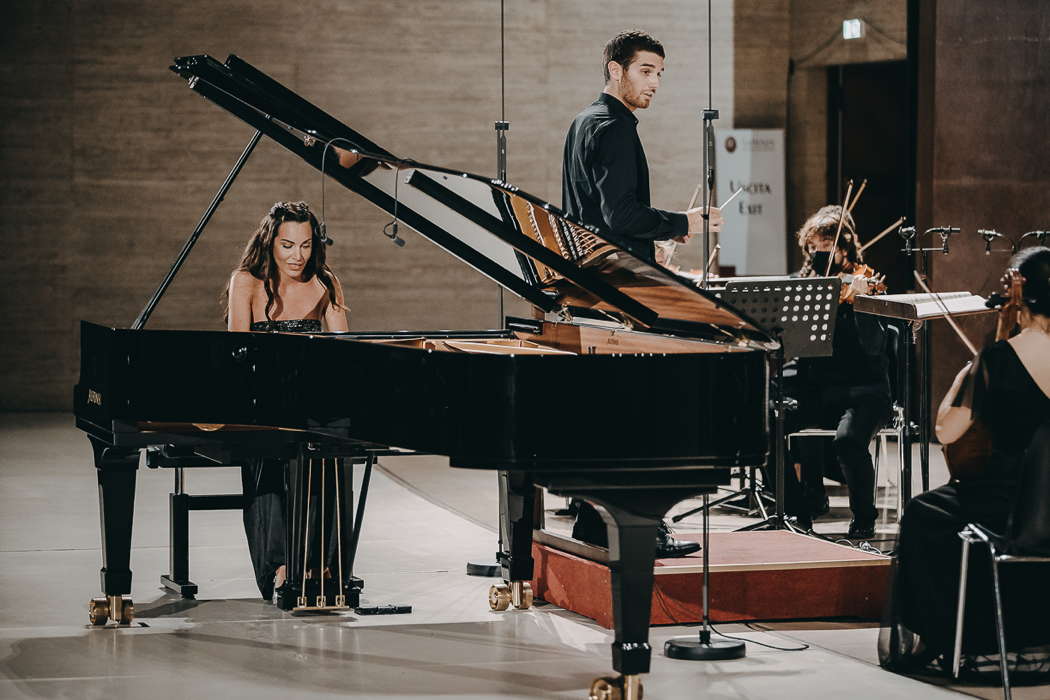
Gloria Campaner playing Beethoven with Enrico Saverio Pagano conducting the Canova Chamber Orchestra in Rome on 30 September 2021. Photo © 2021 Federico Priori
The Adagio un poco mosso presents a theme of lyricism combined with sublime sweetness, typical of central slow movements. The piano is not a mere solo instrument, but appears beautifully fused with the orchestra, which initially accompanies the theme performed by the piano and finally exposes it as a protagonist. In the reading of the Canova Orchestra and Gloria Campaner, it seemed to go from initial exultation to a sentimental, almost sensual dialogue between soloist and orchestra. Through a chromatic descent, the connection with the final Rondo takes place. The starting theme is sparkling and joyful. The central area becomes a continuous proposition of the theme by the piano, with particularly delicate accents, as well as always followed by the full response of the orchestra. The dialogue between piano and orchestra becomes closer until the arrival of the short final cadence, followed by a string orchestral coda to close with enthralling effect. There was very warm applause and requests for an encore, to which Gloria Campaner responded by playing Für Elise.
The composition of Symphony No 7 began in Teplitz, a spa town in Bohemia where Beethoven followed a cure in 1811, hoping to recover his hearing illness. The first performance took place on 8 December 1813 in the great hall of the University of Vienna for a benefit concert. In his book The Work of Art of the Future, Richard Wagner described this symphony as follows: 'It is the apotheosis of dance: it is dance in its supreme essence, the most blissful implementation of the movement of the body almost ideally concentrated in sounds. Beethoven in his works brought the body into music, implementing the fusion between body and mind'. Rhythm is the main element of the four movements.
In the Canova Orchestra's rendering, dance was always present. In the first movement (Poco sostenuto, vivace) we have echoes of village dances. (It's not for nothing that the seventh follows the sixth, the Pastoral Symphony, a very descriptive piece of music.) In the second movement (Allegretto), Pagano and the orchestra highlight the transition to the cantabile. In the third (Presto), the orchestra played with virtuosity and a refrain echoes an Austrian folk song. In the fourth and last movement (Allegro con brio), the dance becomes a triumphal motif introduced by the winds and taken up by the strings.
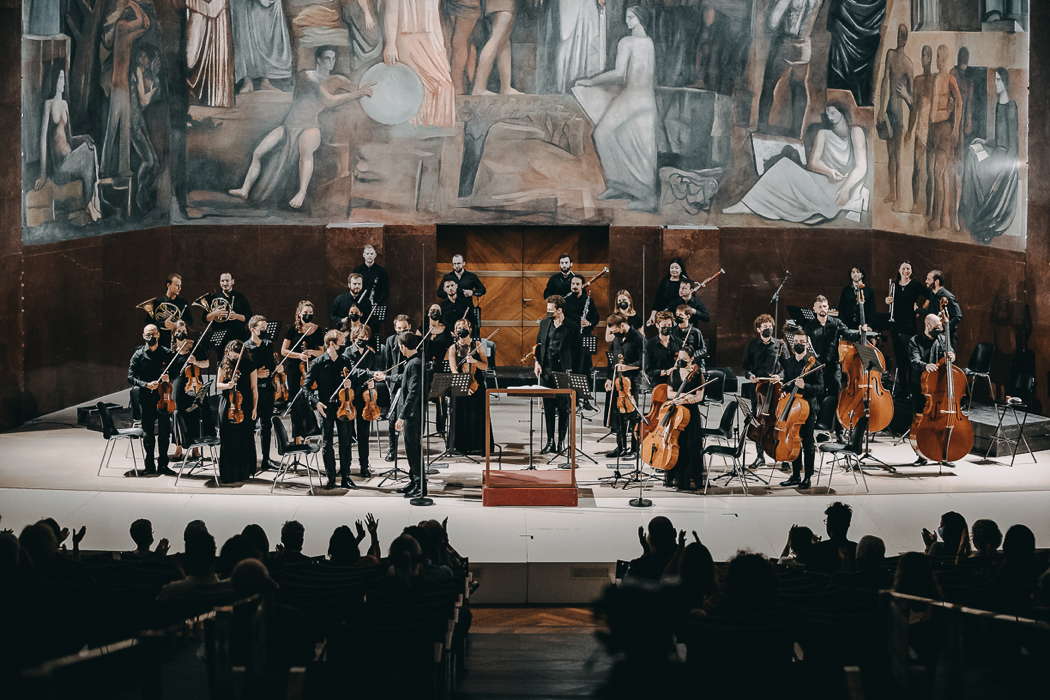
Enrico Saverio Pagano with the Canova Chamber Orchestra in Rome on 30 September 2021. Photo © 2021 Federico Priori
At the end was not applause but ovations and requests for an encore to which Pagano and the orchestra replied with an impetuous march by Rameau. The evening's real coup de théâtre was Enrico Saverio Pagano himself who conducted with wide arms and all his body (as Wagner indicated in the quotation above) as well as with passion that was felt in the hall and enthralled the audience. A real show in the show.
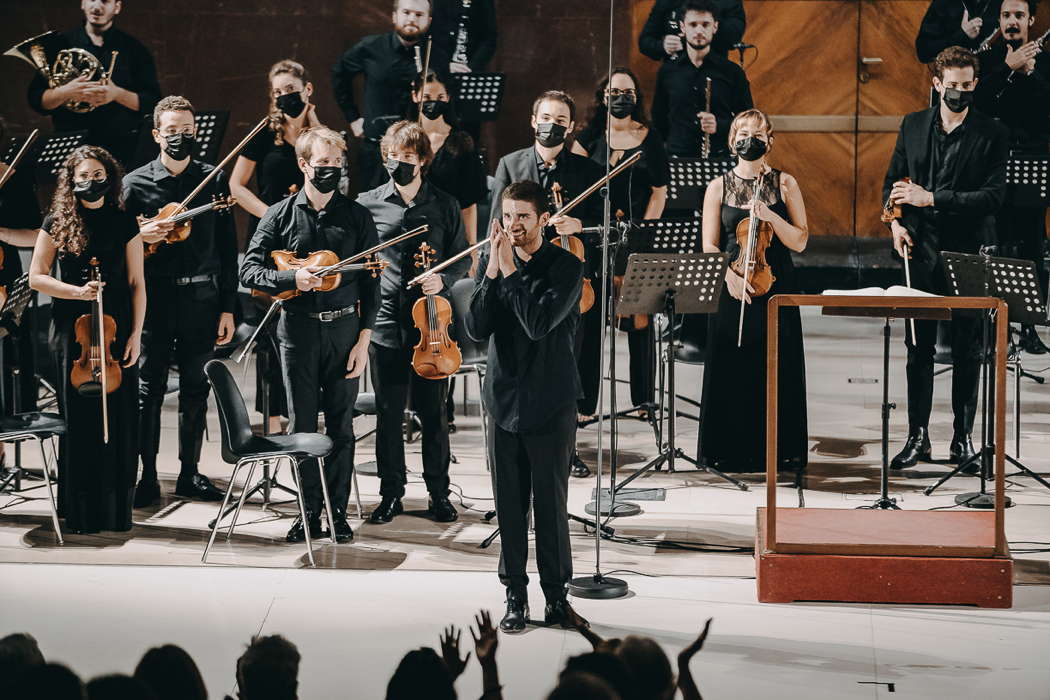
Enrico Saverio Pagano with the Canova Chamber Orchestra in Rome on 30 September 2021. Photo © 2021 Federico Priori
Given the current situation of uncertainty, the IUC has published only the first part of the program that, from September to December 2021, offers nineteen concerts. An inclusive program of different musical genres, which will host some of the best soloists and ensembles of international classical music such as pianists Valentina Lisitsa, Martin Helmchen, Lucas Debargue, Andrea Bacchetti, violinist Sergey Khachatryan, flutist Emmanuel Pahud, harpsichordist Trevor Pinnock, The Tallis Scholars, the Ensemble Novecento e Oltre and Antonio Ballista. There will also be space for new talent, such as the cellist who was awarded the 2019 Tchaikovsky Prize and the young singing students of the great Raina Kabaivanska. Among the characteristics of the program is an unusual showcase on vocality declined in different styles and periods, from polyphony to baroque virtuosity, to a Puccini lyrical gala, up to the twentieth century and Luciano Berio. There are some monographic evenings dedicated to composers who are cornerstones of the history of music: Josquin Desprez, Stravinsky, Saint-Saëns and Morricone.
Copyright © 4 October 2021
Giuseppe Pennisi,
Rome, Italy



